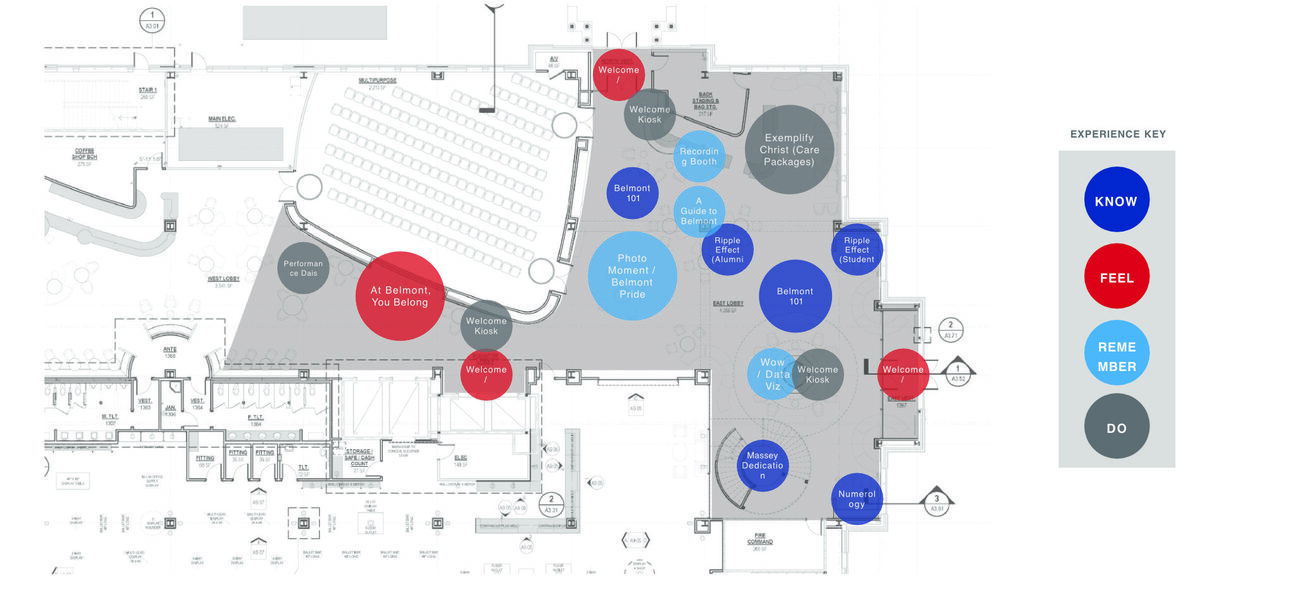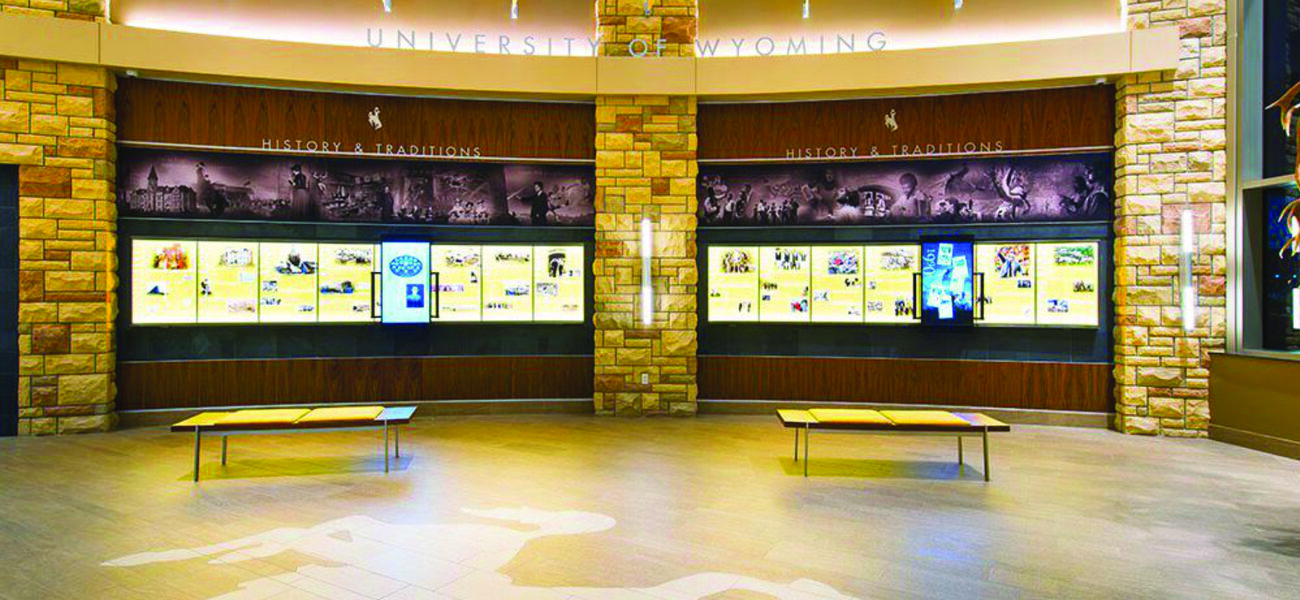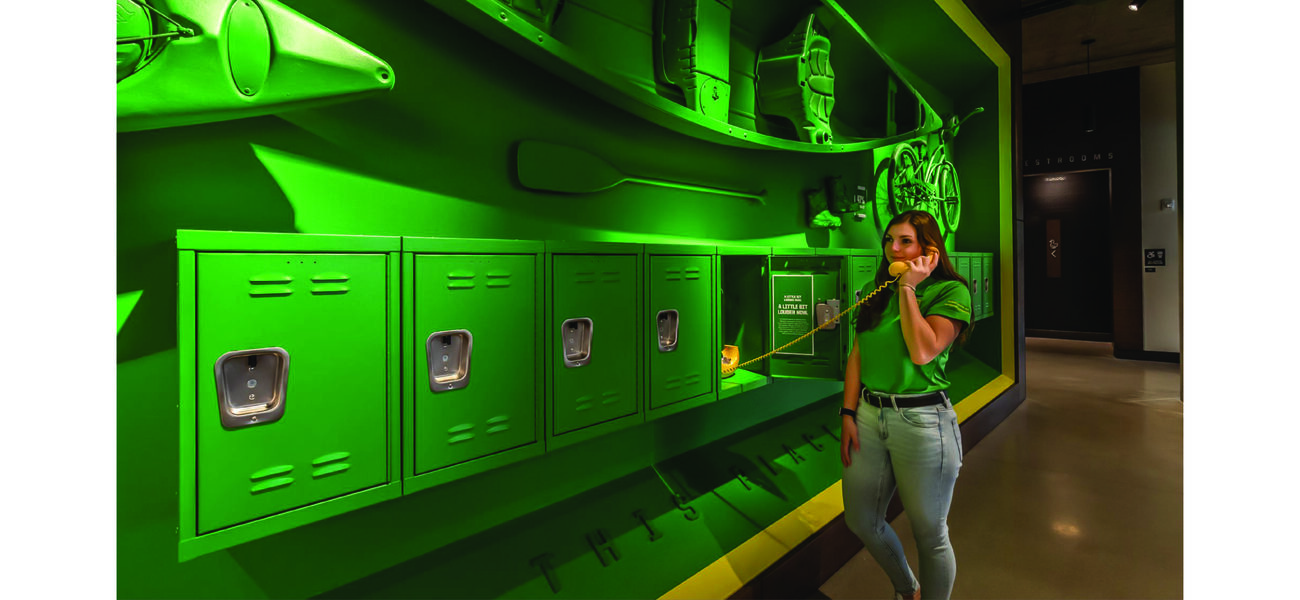Academia is facing a number of challenges today. Declining enrollments and stiffer competition across all stakeholder cohorts, coupled with workplace flux and questions about the value of a college degree, signal the need for some kind of change. When it comes to student recruiting, administrators can take any number of long-range measures to reinforce a school’s value proposition and broaden its appeal, for example, by bolstering expertise in majors of interest. However, there is one area where results can be more immediate—facilities—say John Roberson, CEO, and Grace Johnson, client engagement manager, at storytelling agency Advent.
“What story is your facility telling the people who are pivotal to your high-priority initiatives?” asks Roberson.
A study of student college choices revealed a strong link between the perceived quality of academic buildings and the education offered within them. According to Johnson, out of the study’s top 14 determinants influencing college choices, only facility quality can produce “an immediate, tangible, noticeable impact” for the university.
The other top factors, such as academic reputation, major of interest, or ability to get a job after graduation, “are not things a school could change overnight,” she notes. “Investment into the quality of the facility directly correlates with the perception of the other top factors. And facilities are something schools can start to change now.”
More than Skin Deep
Lest it sound like the connection between appearance and quality is a superficial judgment—or one that can be satisfied by a coat of paint or furniture revamp—Johnson unpacks the rationale behind that appraisal. Top of mind is the extremely strong visual orientation of today’s students, digital natives whose views of the world have been shaped by the ubiquity of camera phones and social media.
“They believe that the better the building, the better the faculty,” she says.
A more substantive concern underlies the bias toward appearance. Today’s students are focused on academic goals that will prepare them for meaningful work that addresses society’s challenges. They’re looking for areas where they can have an impact. Students might base their decisions on their first impression of the quality of facilities, with the knowledge that the quality of their professors can have a lot to do with their success.
“This generation of students wants to be a part of something bigger,” says Roberson. “They want to solve the world’s problems. Universities are doing incredibly inspiring research and learning,” he notes, citing the example of a cross-disciplinary collaboration at the University of Southern California that is teaching drones to use AI to communicate in real time on disaster relief missions. “This type of grand challenge is really important to today’s young people.”
The Storytelling Toolkit
How do you create spaces that bring stories about these endeavors and activities to life, in ways that spark the imagination of potential students—in fact, all stakeholders—and propel them toward deeper engagement with the institution?
Advent has developed a toolkit to guide clients through the process of designing and outfitting spaces specifically to convey these stories so they create moving experiences. The narrative can be crafted in a range of inventive formats, from an interactive timeline of the accomplishments of inspiring alumni to a video clip of a professor’s dramatic science discovery to a wayfinding kiosk that displays home team sports scores. All are designed to strike an emotional chord that moves the target audience to action.
The experience design process is divided into five steps: understand, develop, create, implement, and sustain.
The first step, understand, focuses on listening, with the goals of defining the project, uncovering the school’s “distinctives,” and elevating its “uniques.” Central to this exercise is a process called StoryMining, in which the Advent team works with the institution to identify and interview a cross-section of key stakeholders whom they ask to talk about what connects them emotionally to the project. The extent of the exercise typically parallels the scope of the initiative. For example, when the University of Arizona was about to undertake the largest capital campaign in its history, Advent conducted 18 sessions with 23 stakeholders and recorded almost 10 hours of material.
With this trove of information, the team applies data mining to the video footage and the audio transcription to suss out themes and capture the high points.
“This isn’t taking the message to a Madison Avenue agency and trying to come up with something really clever,” emphasizes Roberson. “It is first-hand primary research. The story team asks stakeholders questions in a very exploratory way to get to the heart of their connections to the school. We often see stakeholders choke up a little on camera.”
A highlight of the understand phase is the Sandbox, a name deliberately chosen for its association with the positive feelings of childhood exploration.
“We wanted to evoke the sensation of playing in a sandbox like a kid trying things and seeing how they work out and then destroying them if they don’t,” says Roberson.
The play analogy extends to participant conduct during the session. Negative input is met with a lighthearted physical act, a fluffy ball thrown in the commentor’s direction. Still, the exercise has very substantive goals, clarifying the objectives and themes of the story the client wants to tell.
“There are a lot of voices in the room that you’re trying to wrangle to get the project to the finish line,” he points out. “Our Sandbox process creates alignment and trust.”
Create
The second step, create, is the time for developing strategy, solving problems, and designing solutions. The momentum video is a frequently deployed tool in this phase, “to set the stage,” says Johnson. Derived from an analysis of the recorded interviews, the video is an unvarnished compilation of the StoryMining vignettes—footage from the process that accurately reflects the stories that bubble up inside the walls of campus facilities—intended to evoke an emotional response from a specific audience.
“We show the momentum video to prospective donors to soften the soil and talk about emotional things,” she says.
The video brings donors closer to stakeholders, enabling them to hear directly about the impact of the project. The emphasis is on capturing the essence of what will happen in that space, and the potential benefits that can result.
Roberson stresses that the momentum video is “vastly different” from an architectural flyover, where the viewer could get distracted by details like the color of the carpet or where a door is going to go.
Adds Johnson, “We encourage clients to involve their donor base, inviting them to be part of a project like this, to be part of the decision-making. Plus, you can fundraise as you go.”
As the story theme emerges and its attributes are identified, the creative effort focuses on answering a key question: “What do we want the desired audiences to think, feel, remember, and do in the building?” To make sure those four responses are programmed into the space, the Advent team translates them graphically into the story map. Overlaid onto the architectural plans, the story map traces the experiences of being in the building, matching an individual design element to one of the four experience categories. For example, the entryway is associated with “feel,” while a historical display would be part of the “think.” A branded backdrop for selfies is for “remember,” while a welcome kiosk with a call to action is “do.”
Develop, Implement, and Sustain
The last three steps involve execution and follow-up. Develop includes refining designs, evaluating sample materials, integrating content, and defining details. Activities in the background bring stakeholders or partners into the process.
“We’re giving ideas, concepts, ideation sketches, and renderings to the development team, and they’re using the materials to go out and ‘friend-raise’ and fundraise. Our renderings are not about the auditorium. Our renderings are about telling a unique story on the university campus that hasn’t been told before,” says Roberson.
Once all the details are finalized, the project moves forward to implementation—fabrication of displays and installation of the experience.
In the final step, sustain, Advent provides analytics and mechanisms to measure ROI. A heat map, for example, can assess the level of audience interaction with specific content. Programming that doesn’t attract many viewers can be replaced by material proven to do so. Ongoing engagement support ranges from maintenance to technology and content updates.
A Worthy Investment
According to research conducted by the author of the college choice study—Dr. Darin White, director of the Center for Sports Analytics at Samford University, Birmingham, Ala.—at least half the high school students interviewed say they knew within the first few moments of visiting a campus that the school was the right one for them. Their reaction indicates that landscaping elements and the external architecture of the welcome center also play a large role.
“Universities that communicate a consistent brand message from the moment a student drives onto campus produce a more enduring first impression than universities that do not,” relates Johnson. “We found that 44.7% of high school students end up attending the university that had the most impressive welcome center ‘eduscape.’ Very few students who are turned off by something when they first arrive on campus end up selecting that school.”
She concludes that when the narrative is brought to life effectively, it offers “a new way to expand revenue and help recruit top students through the power of a persuasive story.”
Roberson urges institution leadership to compare the cost of creating a design experience to some other spending categories.
“A university will spend 15% of a building’s budget on an HVAC system, which only gets attention when it’s not working, while 4-6% of the budget goes to furnishings,” he remarks. “We need to think about some percentage of that going to telling the story of what’s happening in the building. If we approach the project arm in arm with the university, we can bring advanced funding, so the storytelling pays for itself.”
By Nicole Zaro Stahl



